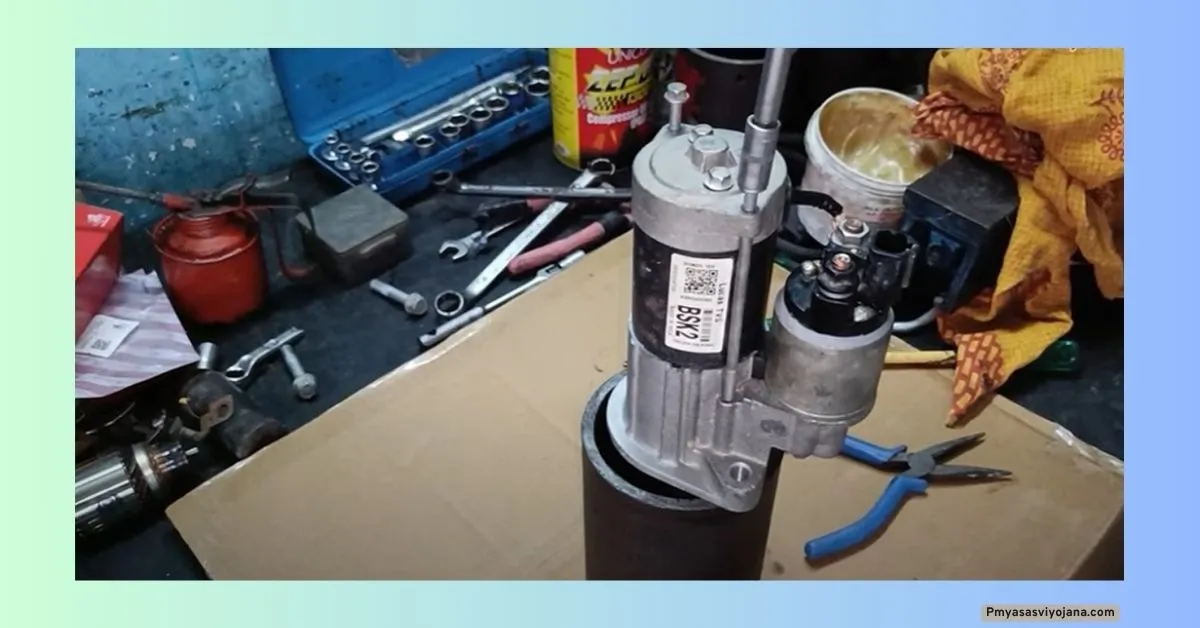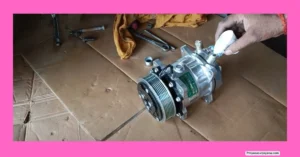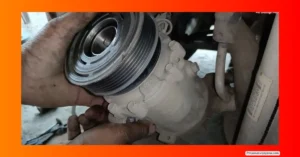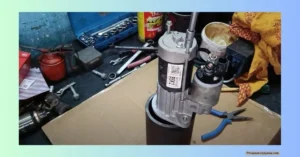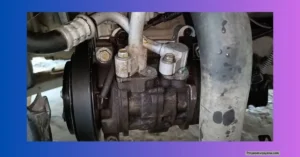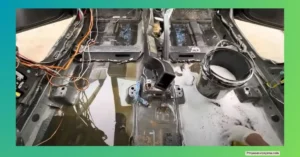If you own a Hyundai i10 Grand, you probably expect the self-starter to last for years and thousands of kilometers without trouble. But sometimes, life throws surprises. In this post, I want to walk you through a real-world Hyundai i10 Grand self-starter repair in 2025, why this issue happens, and how you can fix it yourself or get the right help—without overpaying or getting lost in technical talk.
Let’s get right into this unique case—an i10 Grand with only 27,000 km on the clock, facing a burnt self-starter. We’ll look at how I handled the repair, why it happened, the actual costs, and tips to keep your car running smoothly. If you’re in India and wondering about the Hyundai i10 Grand self-starter repair 2025 price or just looking to understand why your starter motor failed, keep reading. I’ll also highlight prices, tips, and trusted contacts to help you out.
Overview of the Hyundai i10 Grand Self-Starter Issue
This started with a 2017 Hyundai i10 Grand that had barely seen 27,000 kilometers of road time. You’d expect such low mileage to guarantee trouble-free operation, especially for a part as sturdy as the self-starter.
But this i10 Grand came to my shop with a classic self-starter failure—burnt armature and carbon plates inside the starter motor. On opening up, it was clear: the inner workings had overheated. The signs were obvious. The armature had burn marks, and the carbon was charred beyond use.
Here’s what I found and replaced:
- Original armature (approx. ₹1,275 for Hyundai i10 Starter Motor price in India)
- Carbon plate (genuine part, price varies but usually less than the armature)
- Rubber seals/packings (minor, but critical for dust protection)
- Grease and cleaning fluids
A Hyundai i10 Grand self-starter should not fail this early—27,000 km is way below the expected lifespan. Usually, self-starter failures show up after over 1 lakh kilometers or many years of hard usage. That’s why this case is so interesting. I’ll explain the actual cause near the end, and it might surprise you.
The repair process involved not just replacing the parts but making sure the whole system was clean, smooth, and correctly greased—overlooking this step can lead to bigger troubles and false starts.
Step-by-Step Repair Process of the Self-Starter
When I got started on this Hyundai i10 Grand self-starter repair 2025, I focused on accuracy and care. I wanted to ensure the fix would last and perform like new.
Initial Cleaning and Preparation
First, I thoroughly cleaned the self-starter components with petrol. This removes old grease, dust, carbon deposits, and built-up grime. Cleanliness is key here—the more carefully you clean, the better you’ll spot wear and tear or hidden issues.
After every part was clean, I made sure to dry them before adding any oil or grease. I paid special attention to the bearing and bush areas. Without proper lubrication, even new parts can wear out fast.
Replacement of Key Components
With the cleaning done, I unpacked the new replacement parts.
- New genuine carbon plate with packing cost appropriate for Hyundai i10 Grand self-starter repair 2025 price in India (usually not more than a few hundred rupees)
- Original armature (cost me about ₹1,275, matching the Hyundai i10 Starter Motor price lists of 2025)
It’s important to buy original parts, especially with electrical systems. They’re prepped at the factory and don’t need sanding or polishing.
I fit the new armature and carbon plates inside the starter’s housing, using a small screwdriver for accuracy. This avoids misalignment or bending the carbon, which could cause uneven wear or even immediate failure.
A tricky part is the spring tension inside the carbon plate assembly. The springs must press firmly against the armature’s commutator—but not too hard. A loose spring causes poor contact, while too much tension can overheat or jam the system. I made sure the springs were raised and pressing just right, adjusting carefully so the carbon stayed in place. I checked the rubber seals and packings, applying a bit of grease to help them fit snugly and stay in place, preventing dust, water, or rust from sneaking in.
Assembly and Final Adjustments
At this stage, I started putting the self-starter back together.
Here are the steps I followed:
- Place gears back onto their shafts, greasing lightly for smooth turns.
- Fit the rubber sealing gaskets back in place, adding a thin layer of grease so they stick and don’t move during assembly.
- Install the solenoid switch and connecting wires—being gentle to avoid stripping threads or snapping terminals.
- Secure all screws and bolts—first tightening by hand, then with tools for a firm, even fit.
- Double-check the spring tension on all carbons, ensuring no parts are pinched or misaligned.
Technical tip: Never force screws or overtighten. If something doesn’t fit, recheck alignment—you don’t want to crack the housing or strip threads. With everything installed and greased just right—not too much, not too little—the starter assembly was ready for final tests.
Root Cause Analysis: Why Did the Self-Starter Fail?
Main cause: underuse, not overuse!
Even though the car is a 2017 model, it had barely been used in seven or eight years, covering only 27,000 km. Normally, starter motors fail from old age or high mileage, but here the rare reason was not driving enough.
Here’s what happened inside:
- The carbon plate sits in a rocker plate, held by spring tension against the spinning armature.
- Regular use keeps the carbon surface polished and moving freely.
- But with low usage, the carbon got rusty and stuck. The spring held one spot for years, flattening it down and preventing the carbon from advancing.
- When power finally reached the stuck carbon, it couldn’t make full contact. This caused the armature’s commutator to overheat, short-circuit, and burn out—along with the carbon plate.
- Both the armature and rocker plate were beyond repair and had to be replaced.
Without this problem, a self-starter in a Hyundai i10 Grand should last way over 100,000 km (in some cases up to 270,000 km or more). Self-starters are designed to handle regular use, but ironically, no use at all is even worse.
Symptoms and Technical Effects
- The engine crank would slow or take a lot of effort.
- The starter would heat up, sometimes with a burning smell.
- Clicking or no start at all as the burned parts stopped conducting.
Advice for owners: If you store your Hyundai i10 Grand for long periods, start and drive it occasionally. This keeps the self-starter’s carbon plates moving, wards off rust, and preserves spring tension. This kind of early failure is uncommon, but it highlights why regular, even light, use is better than letting a car sit for months on end.
Testing and Quality Check After Repair
Once reassembled, I always run checks before fitting the self-starter back on the engine.
Here’s my quick checklist:
- Spin the starter by hand to ensure smooth, resistance-free movement
- Connect a 12V battery and check for healthy, strong rotation (listen and feel—no grinding, rattling, or slow start)
- Check electrical connections for tightness and no weak terminals
- Confirm the solenoid switch triggers cleanly
- Wipe away excess grease or grime from external surfaces
If the starter motor passes all these, I move on to the final vehicle test—reinstalling and starting the Hyundai i10 Grand to make sure it fires up quickly and reliably. I never skip testing. It’s the best way to avoid repeat labor and reassure myself (and the car owner) that the fix will last.
Hyundai i10 Grand Self-Starter Repair 2025 Price and Cost Details
Costs matter, and I know how important it is to avoid being overcharged or getting poor-quality repairs.
Here’s a breakdown based on this specific case in India for 2025:
- Hyundai i10 Grand self-starter repair 2025 cost (labor only): ₹400-₹700 depending on the workshop
- Original Hyundai i10 Starter Motor price (armature): ~₹1,275
- Carbon plate and consumables: ~₹200-₹400
- Hyundai i10 self-starter price in India (full unit, if you need to replace the whole thing): ₹3,000-₹5,000 depending on part brand and location
Note: These are typical rates in 2025 India. The Hyundai i10 Grand self-starter repair 2025 price might vary in bigger cities or authorized service centers.
If you own a 2013 Hyundai i10 Grand or later, the components and labor costs remain in the same range unless there’s major internal damage. Prices haven’t changed much for over a decade in these parts. Genuine parts can make a difference. Always ask for original (OEM) replacements to avoid repeated breakdowns or short life.
Preventing Self-Starter Failure: Simple Maintenance Tips
Want to keep your Hyundai i10 Grand’s starter healthy for years? Here are a few easy pointers:
- Boxed Tip:
- Start the car at least once a week, even if you aren’t driving daily.
- Keep the battery healthy—weak voltage can stress the self-starter.
- Ask your service shop to check and clean the starter at routine service intervals.
- Don’t let water enter the engine bay; moisture speeds up corrosion.
Conclusion
If you found this Hyundai i10 Grand self-starter repair 2025 India guide helpful, please let me know in the comments below. Like, share, and don’t forget to follow my channels for honest car care tips and real-world repair stories. I hope this saves you time, money, and headaches—and helps your i10 Grand keep starting strong for years to come.
Read also.
- New Hero Xtreme 125R Update Version 2025: Full Review, Key Changes, and On-Road Price Insights
- New Hero Splendor Plus i3S Update Model Detailed 2025: Complete Review & User Experience
- New Tvs Apache RTS-X Latest Update 2025: Full Review, Features, Specs, and Launch Expectations

Hello! I’m Rajesh Kumar, bringing you unbiased car and bike reviews with real-world insights to help you find the perfect ride for your lifestyle.
